Sometimes at STH we come across server hardware that is nothing short of intriguing just because of a form factor. The HPE 620QSFP28 is one of those adapters. While many adapters have individual 25GbE SFP28 ports, this quad port adapter uses a single QSFP28 port. QSFP28 ports are commonly used as 100Gbps ports for 100GbE networking and one can normally break that 100GbE port into 4x 25GbE ports. Here, HPE is using the QSFP28 form factor to get around a practical design problem.
As a quick note, you can find these adapters also using HPE part numbers 840134-001 and 817762-B21.
HPE 620QSFP28 Ethernet Adapter Overview
The HPE 620QSFP28 is a very different card indeed. This adapter, that is rated for up to 19W of power consumption, has a relatively small heatsink but an active fan onboard. Most NICs tend to be passively cooled and instead use chassis cooling in servers. This allows the NIC to benefit from redundant cooling and eliminates another moving part that can fail with the NIC fan.
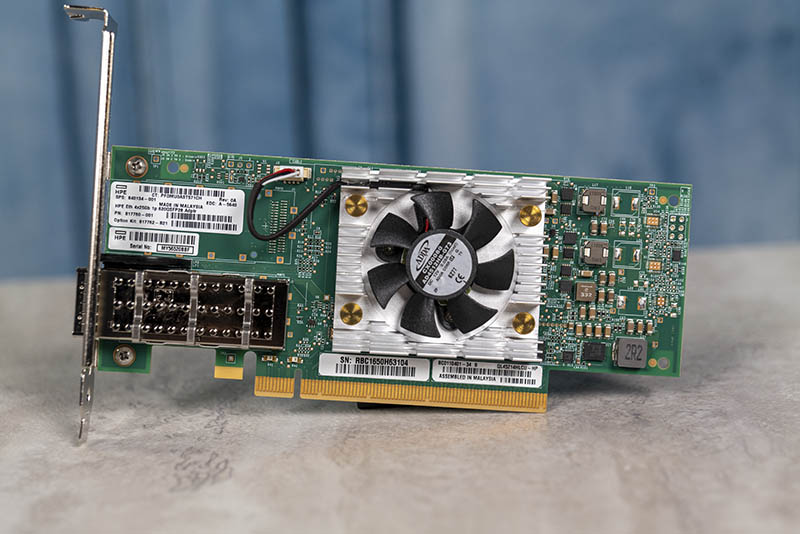
The adapter itself is designed around the QLogic, then Cavium, now Marvell 45604 chipset. If you want to look up some of the key specs and features you can search for QL45604-B0G. The key feature is the QSFP28 port providing 4x 25GbE links. We could not get a single 100GbE link working on our units so this is a quad 25GbE adapter in a single port.
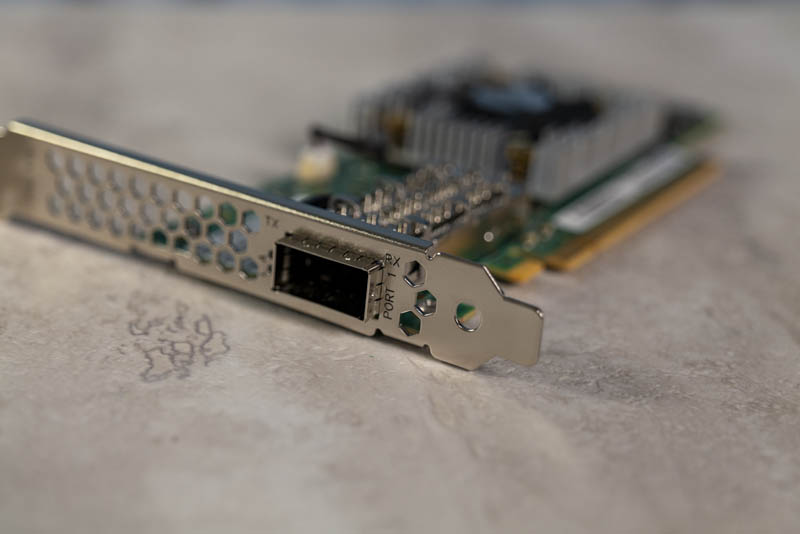
Using the QSFP28 port helps this NIC’s form factor. It is able to maintain a low profile form factor without using four SFP28 cages. In low profile cards, it takes extra engineering to fit four SFP+/ SFP28 cages and remain low-profile spec compliant or nearly spec compliant. We are going to have more on this in a future review.
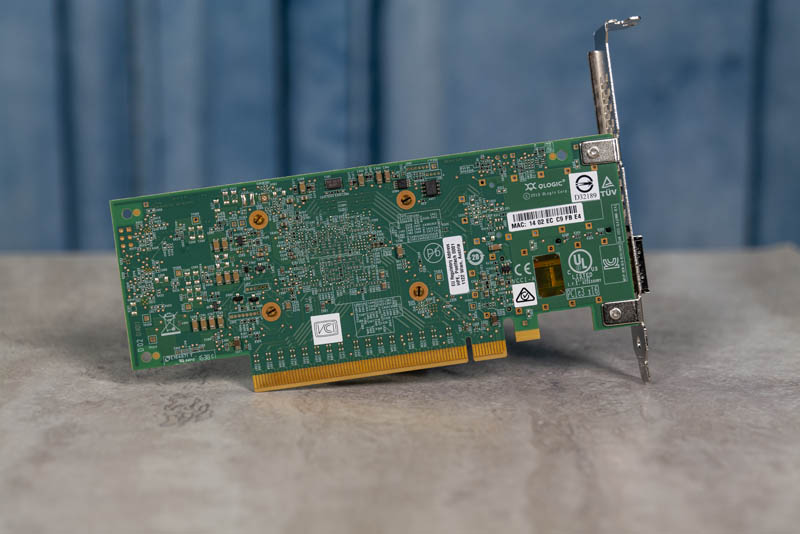
The rear of the unit is largely barren. We can see the QLogic branding which is two acquisitions behind the times despite these being options in current HPE ProLiant DL380 Gen10 servers.
Another quick impact of having a QSFP28 always enumerated as 4x 25GbE is that it allows for breakout cables to be used. Some adapters with QSFP+/ QSFP28 do not allow breakouts to four target devices. If you think about edge-computing scenarios where one may have 2-5 nodes, this opens up potential direct-attach networking scenarios without using a switch.
HPE 620QSFP28 Key Specs
Instead of listing everything for these NICs, we wanted to talk key specs quickly. The HPE 620QSFP28 adapters themselves support HPE’s 3D Sea of Sensors as one would expect. Beyond that, these are FastLinQ 45000 series adapters so here are the key specs:
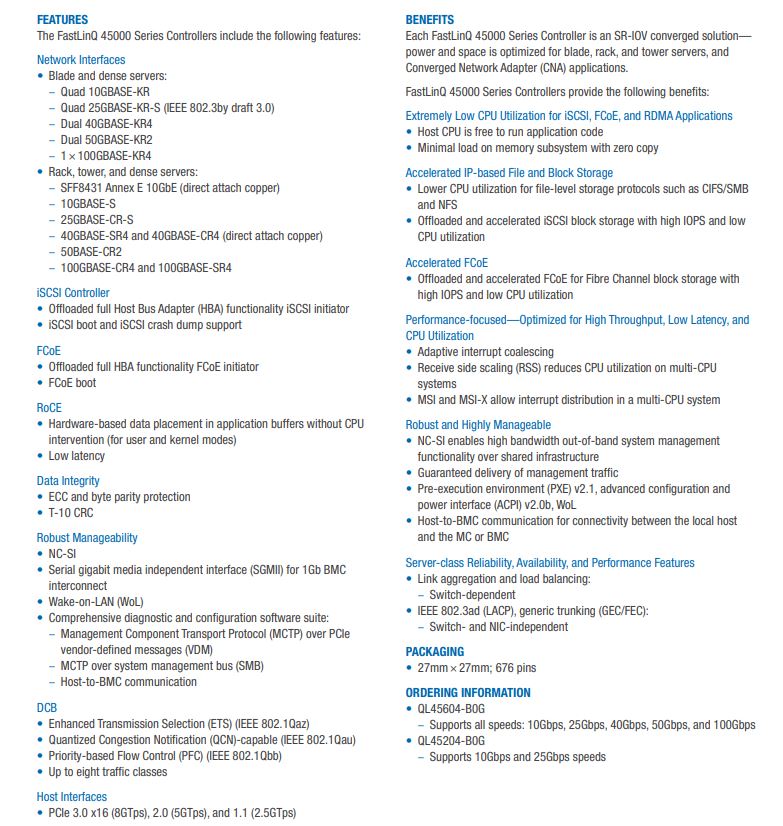
Support for features such as RoCE V2, VxLAN, NVGRE, and FCoE/ iSCSI offloads are welcome here. Older cards did not have RDMA capabilities which are becoming important in the 25GbE generation, especially with 100Gbps aggregate speeds.
HPE 620QSFP28 in Linux
We wanted to take a few moments to show our readers what these NICs look like installed. Here is a look at the lshw output:
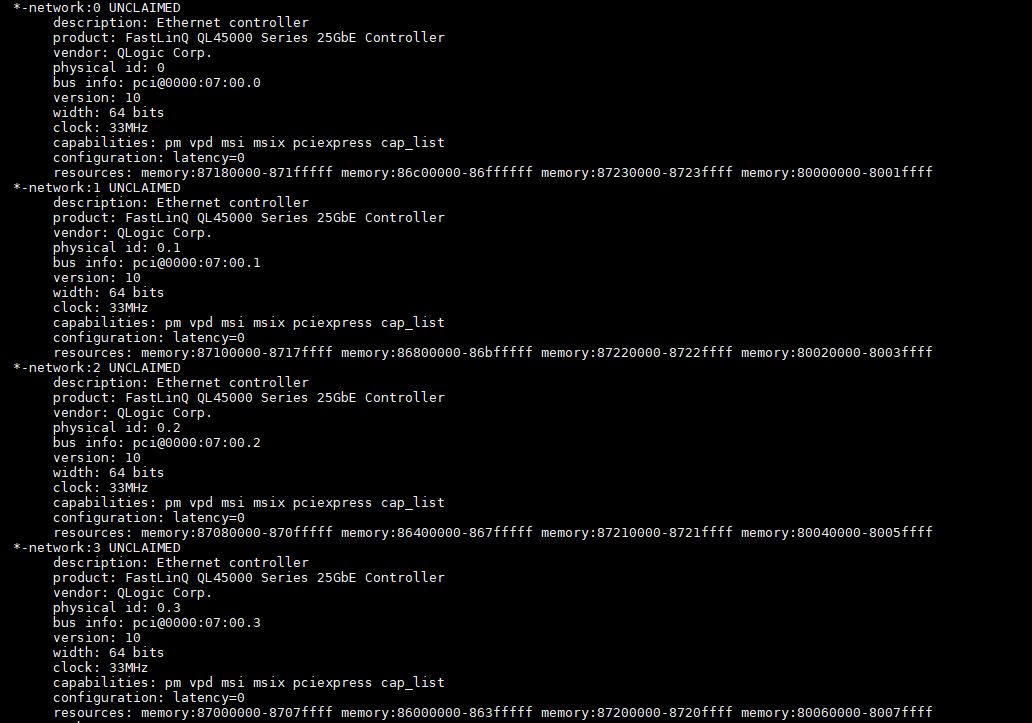
Here is the lspci -vvv output for the NIC:
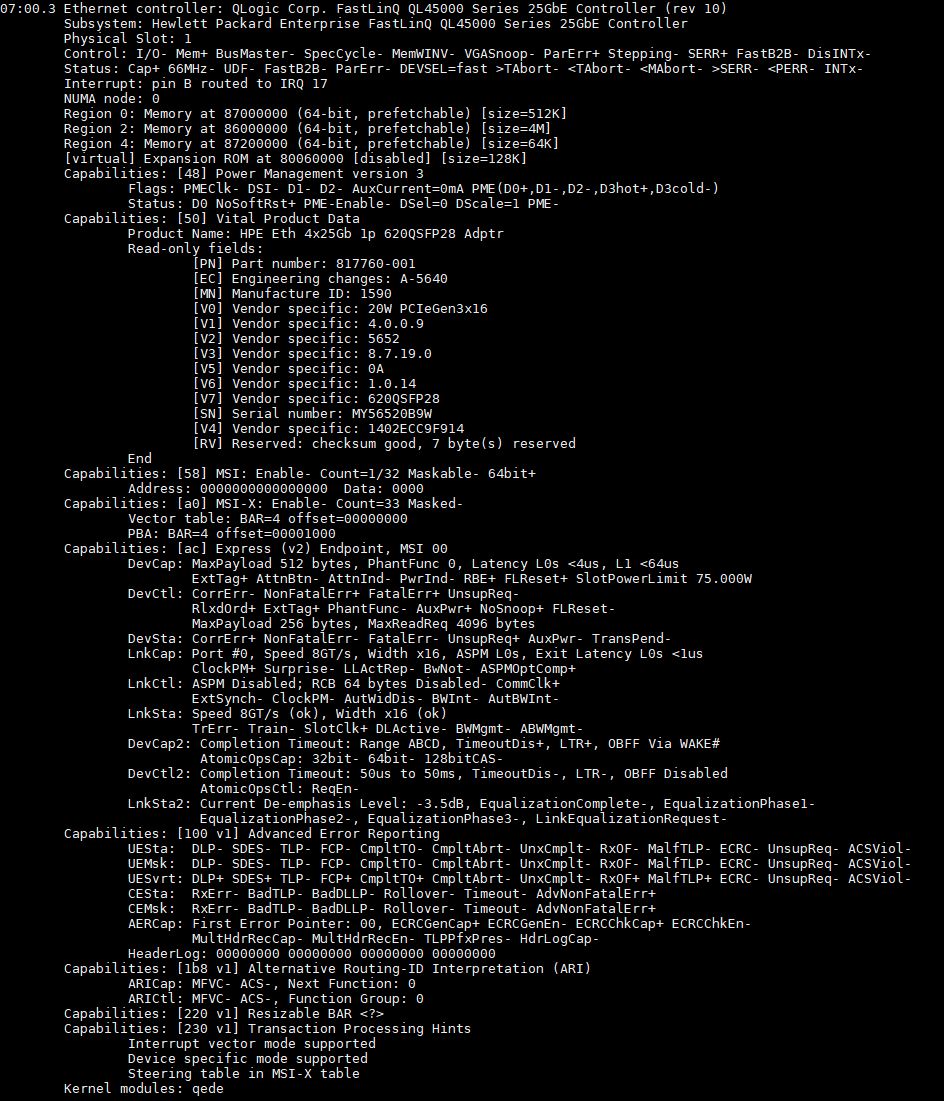
As a quick note here, these adapters are often not working out-of-the-box in many popular distributions. You will need to install drivers to get the adapters up and running in your server which is different than the current support structure for Intel and Mellanox cards to name examples.
HPE 620QSFP28 Performance
We tested the HPE 620QSFP28 using a 0.5m breakout QSFP28 DAC to our 32-port 100GbE Dell Z9100-ON data center switch. We then varied the port speed and connection type and tested transfer speeds from our network storage.
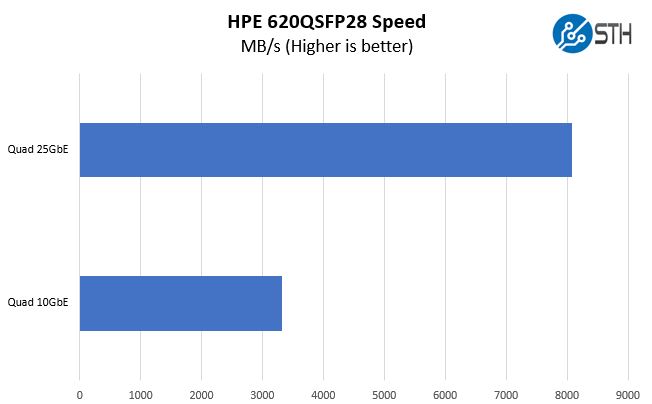
25GbE had a significant impact using the same storage targets and swapping from 10GbE to 25GbE. This is what we would expect.
Note, we do need to get RoCE testing and testing for other features. We are still early in our review series so we are going to keep a pair of these NICs available for when we do add that capability.
Final Words
We have quite a few of these adapters in the STH lab and wanted to share an experience. We installed one of these adapters in a Core i9-based workstation and the system did not boot. These adapters were meant for HPE ProLiant Gen9 and some Gen10 servers, not general systems so we removed the adapter. After powering the system back up, the PCH refused to identify any SATA devices on any port. It took a full power off and CMOS reset to get the PCH back to working order. On the other hand, in a HPE ProLiant MicroServer Gen10 Plus, this worked without issue, albeit loudly due to the fan. We are going to recommend this only for HPE servers which is what this adapter is intended for.
Overall, if you are using HPE servers, and have the network infrastructure to support 4x25GbE in a QSFP28 connector these are very interesting cards. They can be had on the secondary market for under $100 which makes them an incredible value if you can use them.
Our general sense is that many of our readers looking for a quad 25GbE adapter for smaller installations should be mindful of the challenges with noise due to the small fan. It completely dominated the noise profile in the MicroServer Gen10 Plus. Also, if you want to install this device in an unsupported OS (e.g. a Debian variant such as Proxmox VE, or a XenServer offshoot such as XCP-ng) and you are not confident in your ability to troubleshoot installation issues, then we are going to suggest other adapters. That is a disadvantage of not having out-of-box driver support. As time goes on, one has to wonder whether support will continue especially under Marvell with a broader NIC portfolio.
Still, we wanted to show our readers what we thought was an interesting NIC solution on the market.

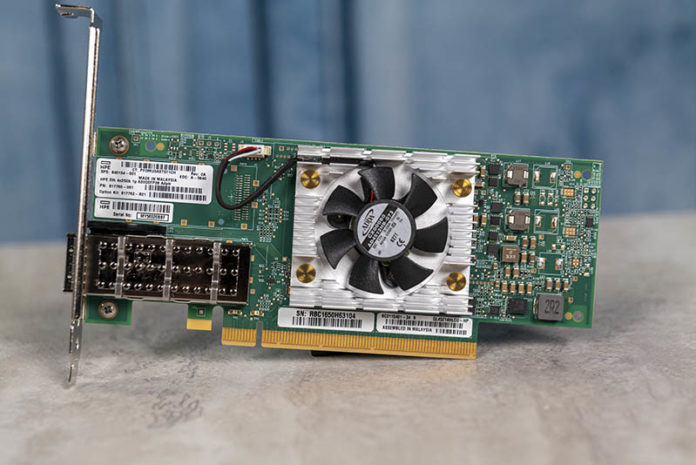



would have been nice to see it with the splitter or whatever is needed to share the four connections with one QSFP port.
So…Pfsense with 4 x 25Gbe ports? Anyone? :.)
Seriously doable if there are compatible drivers in pfsense. You would just need a 4 x 25Gbe splitter cable.
Mellanox sells ’em for about $115. Not bad to get 4 x 25Gbe setup going. You would just need this card, the cable, and 4 25Gbe cards.
https://store.mellanox.com/products/mellanox-mcp7f00-a001r30n-passive-copper-hybrid-cable-eth-100gbe-to-4x25gbe-qsfp28-to-4xsfp28-1m-colored-30awg-ca-n.html
My Windows 10 Test PC (fx8350) Boots after 5min. Then I only See 4 QLogic FastLinQ Ethernet Adapters in my device Manager. I tested a QSFP28 Module and saw (through a camera) a blueish light. Don’t know how to configure the adapter tho. Does anyone know how I can make it work with Windows 10?
anyone know if you can use a 100Gbe transceiver to get the full 100Gbe instead of breaking it out to 4x 25Gbe?
How the heck did you get the card to do 10G? Mine won’t switch down. I’m using it in a Windows file server. In the driver settings only 25G is selectable, with the QLogic tools only 25G and AutoNeg is selectable, but even on AutoNeg there’s no link to my Brocade 6610 on the 4x10G QSFP port.
I also noticed Marvell release new firmware in 2021 for the chipset while the newest from HP is from 2018. Any possibility to crossflash the Marvell firmware? Maybe that’ll help with my problem…